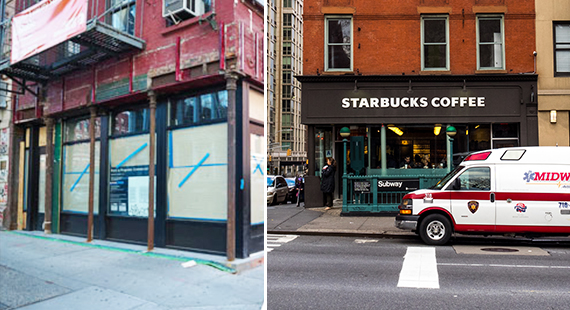Trending
Chain stores are the best kind of tenants — for lenders
Landlords benefit from higher property values, credit ratings with national retailers

Starbucks is the harbinger of gentrification, and once the Whole Foods appears, gentrification is a foregone fact.
But the invasion of the retail chains has as much to do with banks and lenders as it does local landlords.
That’s because banks consider restaurant chains and national retailers a safer bet than independent businesses, and properties are valued correspondingly, Bloomberg reported.
Commercial real estate is usually valued as a multiple of annual rent, but the perceived credit-worthiness of the tenant can drive up the valuation as well.
Developer Lorenzo Perez found that a retail complex he owned in Phoenix, home to several mom-and-pop shops, was valued at 25 percent less than nearby retail properties. “Because they have a Chipotle or a Starbucks or a Jimmy Johns, their valuations are on a whole different level,” Perez told news website.
In New York, landlords seek out large retailers for their perceived creditworthiness—because they look good to potential lenders. Justin Levinson, a software developer who mapped 1,000 empty retail spaces in Manhattan, found that many landlords were holding out for a McDonald’s or CVS Pharmacy.
But while perceived value of ground-floor retail has been a big factor in the recent construction boom, the glut of such spaces and rising vacancies have led some to fear a retail bubble—which only reinforces the cycle. In its July issue, The Real Deal explored if a correction was coming to New York City’s retail market.
New York City’s small businesses have been attempting to fight the retail chain encroachment for years, but no robust commercial tenant protection laws are in place. A proposal to help small shop owners negotiate lease renewals, first introduced to the City Council in 2008, has not yet come to a vote. [Bloomberg] — Chava Gourarie




